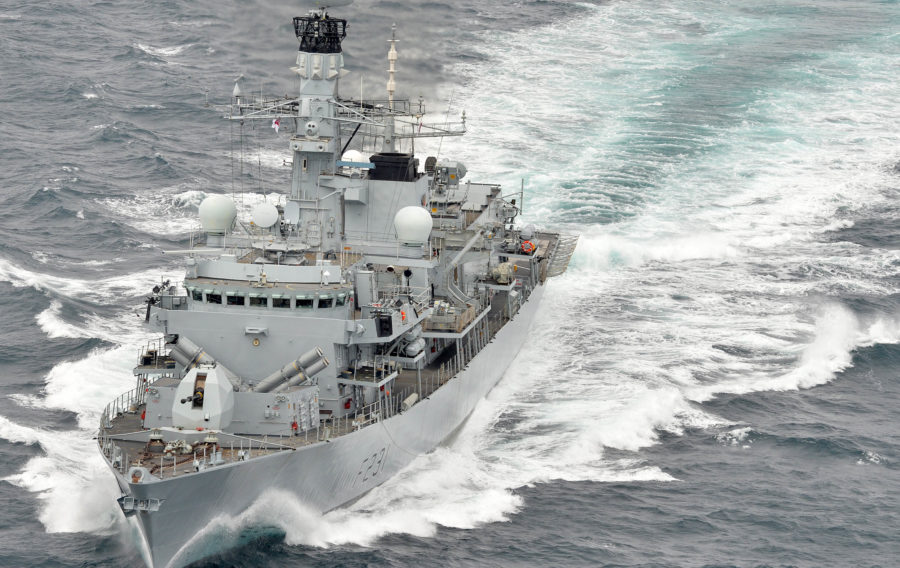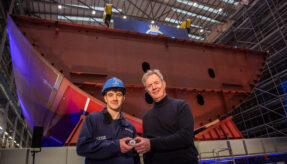
Defence Secretary Ben Wallace has unveiled a next-generation unmanned system that could be used to protect the UK’s future warships at DSEI 2019.
The new system is similar to a water-borne drone. At 13 metres long, the vessel swims around a naval task force, while being remote controlled from a rig. The systems can be used to identify threats such as mines or collect intelligence on enemy ships.
The kit was put through its paces in a demonstration at the Defence and Security Equipment International conference (DSEi) in London, where it protected HMS Argyll in a harbour force protection. The system, attached to PAC24 rigid inflatable boat, navigated the river bed, detecting possible threats and feeding information back to HMS Argyll.
The new system has been unveiled as part of the Maritime Autonomy Surface Testbed (MAST) 13, a programme developed by the Defence Science and Technology Laboratory (Dstl) in collaboration with L3Harris. The purpose of MAST 13 is to further understanding of how Unmanned Surface Vehicles (USVs) can be used in defence.
USVs could offer a potent capability for the Naval fleet; increasing protection and information for the UK’s powerful war ships by detecting threats and operating beyond the visual line of sight.
The Defence Secretary, who was on hand to observe the demonstration at DSEi, said: “MAST-13 is pioneering the future of Unmanned Surface Vehicles for our world-leading Navy. The development of unmanned technology is vital for success in modern warfare, going beyond the capability of traditional ships to attack and defend in uncertain environments.
“As more advanced technology and new threats continue to evolve, collaborative technology development ensures we are constantly pushing the boundaries to give our armed forces the best capabilities possible.”
image of HMS Argyll © Crown Copyright
If you would like to join our community and read more articles like this then please click here.
Ben Wallace DSEI Dstl Maritime Autonomy Surface Testbed MAST







